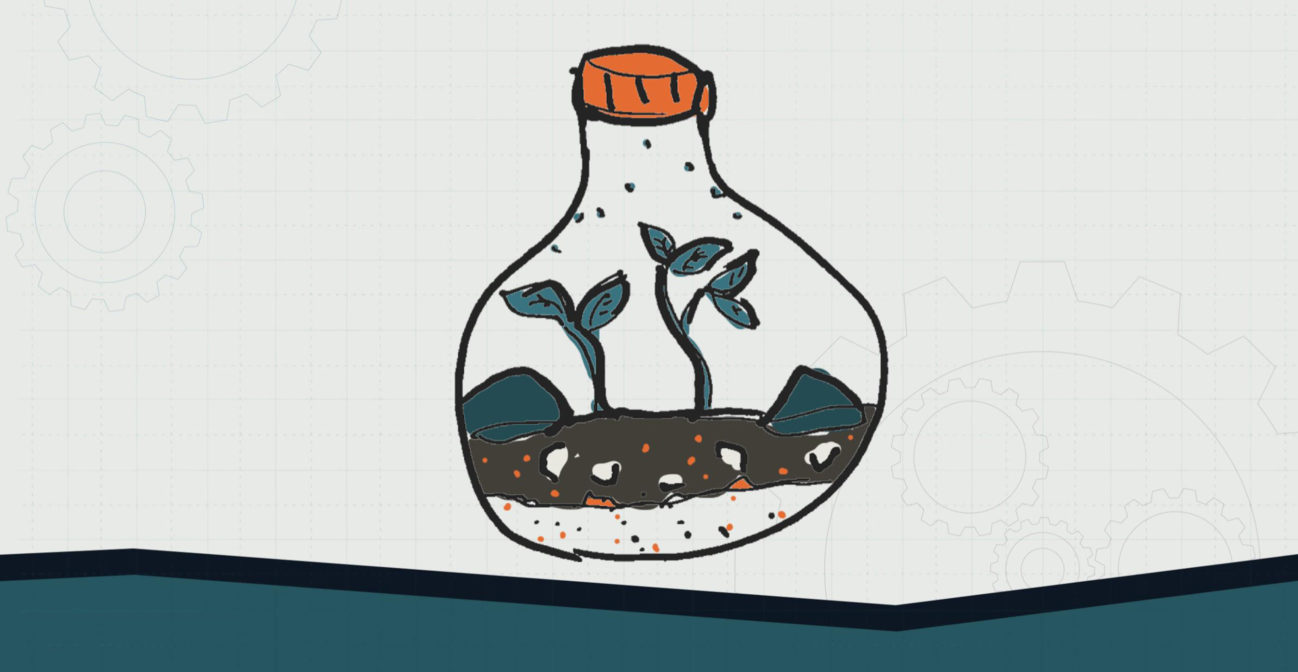Join us for conversations that inspire, recognize, and encourage innovation and best practices in the education profession.
Available on Apple Podcasts, Spotify, Google Podcasts, and more.

ELEMENTARY SCHOOL — LEVEL 2
A terrarium is a sealed container that can be opened to access the plants inside. Closed terrariums create a unique environment for plants, as the clear walls trap heat inside and promote plant growth. In this project, students are gods of their own environments as they learn about photosynthesis, evaporation, and how plants live.
MATERIALS NEEDED:
❏ Plastic or glass container
❏ Sand
❏ Potting soil
❏ Seeds
❏ Water
DIRECTIONS:
As the water evaporates inside of the bottle, it forms condensation. That moisture falls back to the soil in the form of rain. You may need to periodically add a small amount of water to keep the plant healthy, but this terrarium will mostly support itself.
OBJECTIVE: Students will be able to conduct an experiment to see if plants need both water and sunlight to grow.
ESSENTIAL QUESTION(S):
1. Students will be presented with the essential questions and the terrarium build instructions.
a. Ask students to design an experiment using terrariums to provide a scientific response
b. Teacher facilitates students’ learning but does not direct:
i. Use reflective questioning
ii. Encourage students to make progress
iii. Good scientific practices for experimental design
1. Planned experiment
2. Variables & control (language may be too advanced)
2. Evaluate
a. Student teamwork
b. Experimental design
c. Ability to identify the question
d. Communicating their plan and its intended purpose
1. Students conduct their experiment over the course of several days
a. Multiple terrariums should be used
i. Water and light
ii. No light, only water
iii. No water, only light
iv. No water, no light
v. Glass or plastic
b. Students record observations of growth and health of plant
2. Teacher facilitates
a. Good observation techniques
b. Asks reflective questions
3. Evaluate
a. Experimental process
b. Data collection process
1. Students make a conclusion from their evidence
2. Report out on their findings to the class
a. They may do a small presentation
b. Teacher may select on groups to share out and discuss each group’s findings
3. Evaluate
a. Conclusion from evidence
b. Communication of their findings